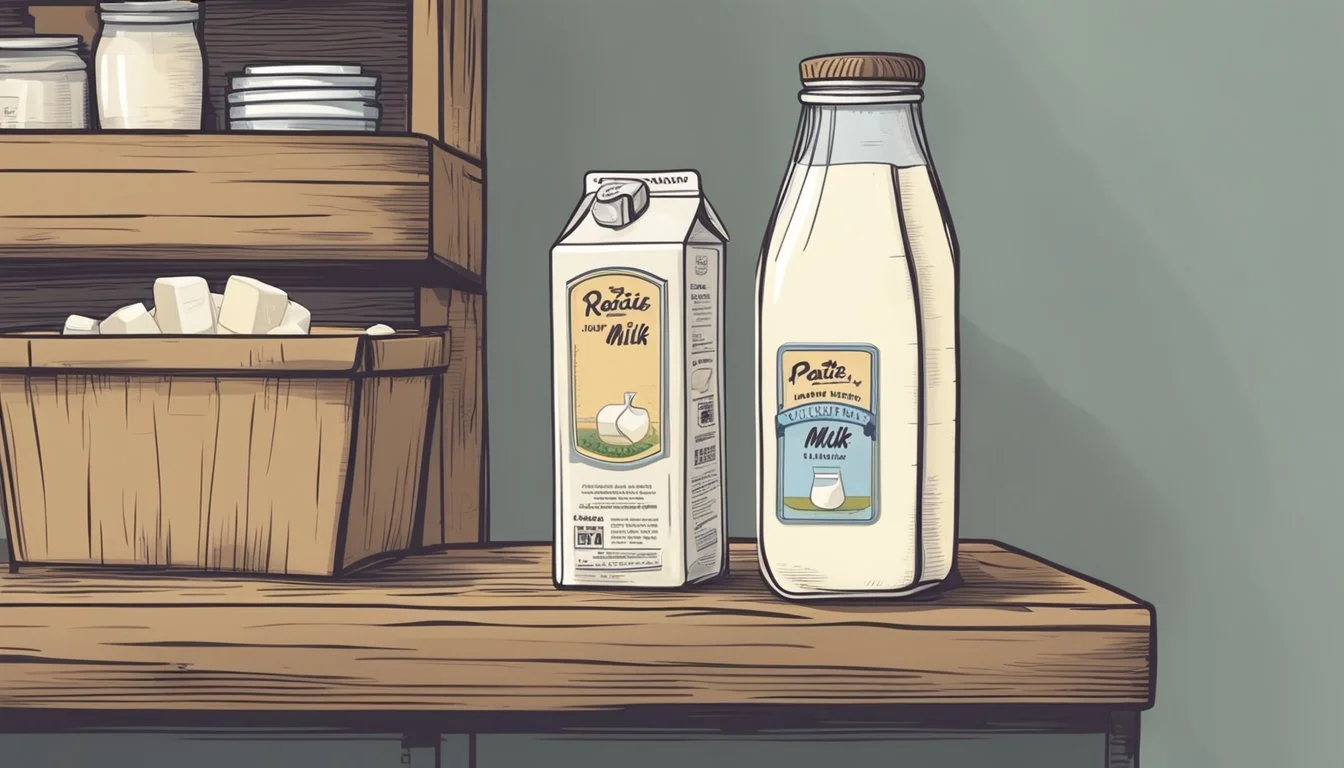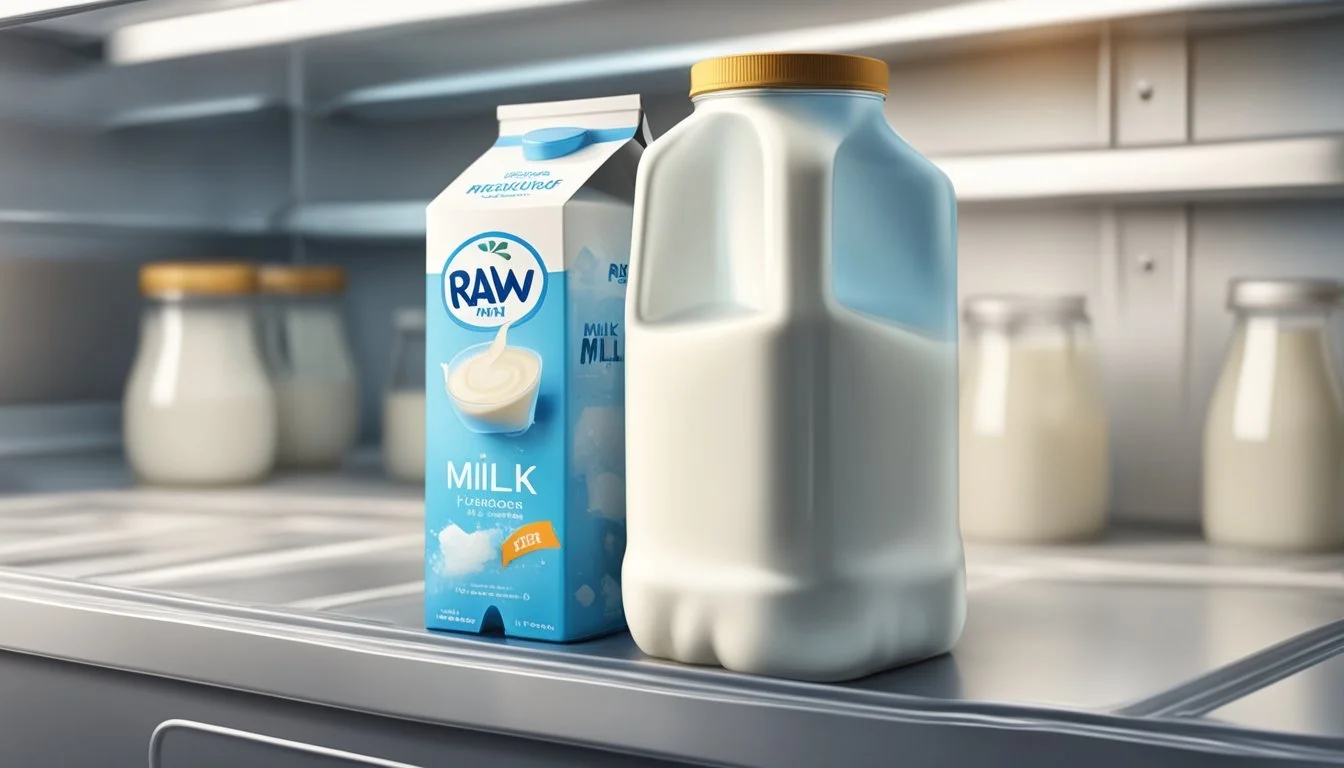Choosing Between Raw and Pasteurized Milk on a Carnivore Diet
Key Insights and Health Considerations
When following a carnivore diet, individuals often wonder about the best type of milk to incorporate—raw or pasteurized. Raw milk enthusiasts argue that it retains more natural enzymes, vitamins, and beneficial bacteria compared to pasteurized milk. This nutritional profile can be appealing for those seeking to maximize the health benefits of their stringent dietary plan.
Pasteurized milk, on the other hand, undergoes a heating process to eliminate potentially harmful bacteria and extend shelf life. While this process does reduce some nutritional content, it also offers a safer, more consistent product. Those concerned about foodborne illnesses might prefer pasteurized milk despite its slightly diminished nutritional value.
In the context of a carnivore diet, where every ingredient is scrutinized for its health impact, understanding the differences between raw and pasteurized milk becomes vital. Choosing between them depends largely on weighing the benefits of raw milk’s natural nutrients against the safety and convenience of pasteurized milk.
Understanding Milk Fundamentals
Milk is a complex liquid full of various nutrients that offer many benefits to those on a carnivore diet. This section explores its composition, nutritional value, and the distinctions between raw and pasteurized milk.
What Is Milk?
Milk is a nutrient-dense liquid produced by mammals to provide nourishment for their young. It consists of water, fats, proteins, carbohydrates, vitamins, and minerals. The primary carbohydrate in milk is lactose. Proteins in milk include casein and whey, which are both high quality. The structure of milk allows it to be used in various dietary applications, including the carnivore diet.
Nutritional Profile of Milk
Milk is rich in essential nutrients. It typically contains about:
Fats: 3-5%
Proteins: 3-4%
Carbohydrates: 4-5% (primarily lactose)
Vitamins: A, D, E, K, B vitamins
Minerals: Calcium, phosphorus, magnesium, potassium
Fats in milk are crucial for energy, proteins aid in muscle repair, and vitamins and minerals support overall health. The exact nutrient composition can vary between raw and pasteurized milk and among different species of animals.
Raw Milk vs Pasteurized Milk
Raw milk is milk in its natural state without heat processing. It contains living bacteria and enzymes that may enhance its nutritional profile but also pose a risk of causing foodborne illnesses. Pasteurized milk, on the other hand, undergoes heat treatment to kill harmful bacteria and extend shelf life. This process can reduce the levels of certain vitamins and enzymes but makes the milk safer for consumption.
Table: Key Differences
Raw Milk Pasteurized Milk Bacteria Contains live bacteria Bacteria are killed Enzymes Intact Some enzymes are destroyed Vitamins Slightly higher in raw Slightly reduced in some vitamins Safety Higher risk of pathogens Lower risk of pathogens
The choice between raw and pasteurized milk depends on one's priorities regarding nutrition versus safety. Each offers unique benefits and challenges for those on the carnivore diet.
Health Benefits and Risks
Choosing between raw and pasteurized milk on a carnivore diet involves weighing their benefits and potential risks. While raw milk proponents cite its nutritional value, pasteurized milk is often praised for food safety.
Advantages of Raw Milk
Raw milk retains more natural enzymes, vitamins, and beneficial bacteria. Enzymes like lipase and lactase aid in digestion and may help those with lactose intolerance.
Vitamins such as A, C, and B complex are more abundant in raw milk, promoting a healthier immune system. Proponents argue that raw milk can boost immunity and reduce inflammation.
Beneficial bacteria, which act as probiotics, support a balanced gut microbiome and may help prevent autoimmune diseases and improve overall digestive health.
Benefits of Pasteurized Milk
Pasteurization significantly reduces the risk of foodborne diseases by killing harmful bacteria like E. coli and Salmonella. This makes pasteurized milk safer, especially for vulnerable populations such as young children, pregnant women, and the elderly.
While some nutrients are reduced during pasteurization, pasteurized milk remains rich in essential nutrients such as calcium, potassium, and vitamin D, which support bone health.
Pasteurized milk also has a longer shelf life, making it more practical for daily consumption and reducing food waste.
Potential Health Risks
Raw milk poses a risk of bacterial infections due to pathogens that are not eliminated without heat treatment. Vulnerable groups face a higher risk of severe illness if they consume raw milk.
On the other hand, pasteurization can reduce some beneficial nutrients and enzymes, potentially affecting digestion and nutrient absorption. Some argue that this processing might compromise the immunity and digestibility benefits found in raw milk.
Ultimately, while the debate includes health advantages and risks from both practices, the choice depends on individual health needs and preferences. Both options offer distinct benefits and risks.
The Carnivore Diet Context
The carnivore diet primarily consists of animal-based products like meat, eggs, and, occasionally, dairy. This diet is noted for high protein and high fat, particularly saturated fat, and aims to keep carbohydrate intake at near-zero levels, maintaining a state of ketosis.
Milk in a Carnivore Diet
Incorporating milk into a carnivore diet is contentious due to its carbohydrate content. A 12 oz glass of whole milk contains about 18 grams of sugar, mainly from lactose. This can disrupt ketosis, an essential part of the carnivore dietary approach.
Some adherents opt for raw milk, which contains natural enzymes that may aid in digestion. Others choose heavy cream and butter, which have minimal carbs yet retain the beneficial aspects of dairy fats.
Milk provides essential nutrients such as casein and whey protein. These contribute to muscle repair and immune function. However, for those strict about maintaining low carbs, non-dairy animal fats like tallow and lard might be more suitable.
Get great value for your money by purchasing tallow and lard online!
Digestive Considerations
Digestive issues are a common concern when including milk in the carnivore diet. Lactose intolerance is prevalent, impacting gut health and causing discomfort like bloating and gas.
Raw milk can sometimes be easier to digest for those who are mildly lactose intolerant because it contains lactase, the enzyme needed to break down lactose.
Including fermented dairy products such as kefir or cheese might also help as these typically have reduced lactose content. Monitoring individual reactions to dairy is crucial, as gut responses can vary significantly between individuals.
Balancing dairy intake with other animal products can ensure a smoother digestive process while maintaining the nutritional goals of the carnivore diet.
Making the Choice
Choosing between raw and pasteurized milk on a carnivore diet involves balancing personal health goals, food preferences, and safety concerns. Each option has unique benefits and potential risks.
Factors to Consider
When deciding between raw and pasteurized milk, it's essential to weigh a few critical factors. Raw milk often comes from grass-fed, pasture-raised cows, which may offer higher nutrient content. Pasteurized milk undergoes heat treatment to kill potentially harmful bacteria, often making it more accessible and easier to store.
Another point is the possible presence of lactose; raw milk's enzymes may aid digestion for those sensitive to lactose, while pasteurization might reduce these enzymes. Consider your capacity to handle raw milk's bacteria and your preference for nutrient profile.
Personal Health Goals
Your health goals play a significant role in choosing between raw and pasteurized milk. If you're on a carnivore diet seeking higher nutrient density, raw milk might be more advantageous. Raw milk may retain more of its natural enzymes, vitamins, and minerals, benefiting those seeking optimal nutrition.
For those focusing on weight management or specific macronutrient targets, it's crucial to account for milk's fat, protein, and carbohydrate contents. Pasteurized milk, readily available, may be more consistent with dietary plans that emphasize safety and ease of digestion without the complexity of raw milk's risks.
Quality and Safety
Quality and safety are paramount when adding raw or pasteurized milk to your diet. Raw milk should ideally come from grass-fed, pasture-raised cows, ensuring higher standards of hygiene and nutrient content. Purchasing raw milk from reputable farms with stringent hygiene practices is essential to minimize the risk of bacterial contamination.
Pasteurized milk is generally considered safer due to the heat treatment process that kills most harmful bacteria. For those prioritizing food safety or with compromised immune systems, pasteurized milk is a safer bet. Always check that any milk consumed meets relevant health guidelines and certifications to ensure maximum safety.
Practical Aspects of Milk Consumption
Whether you are looking to boost your energy or aiming for weight loss, the choice between raw and pasteurized milk on a carnivore diet has practical implications. Consider factors such as digestibility, calorie content, and alternative milk options when making your decision.
Incorporating Milk into Your Diet
Integrating milk into a carnivore diet can help improve satiety and provide essential nutrients. Raw milk can be appealing due to its natural enzymes and potential digestive benefits.
Pasteurized milk, on the other hand, might be safer due to the elimination of harmful bacteria. Those with lactose intolerance can opt for lactose-free milk to avoid discomfort and still gain the nutritional benefits.
A2 milk is another option that may be easier to digest than regular milk. For individuals focused on weight loss, full-fat milk can help maintain energy levels while keeping you satiated, controlling overall calorie intake.
Alternatives to Cow's Milk
For those who have issues with digestibility or lactose intolerance, milk alternatives can be beneficial. Goat milk is an option that is often easier to digest and maintains a good nutritional profile. It offers a balance of calories and nutrients and can be consumed both raw and pasteurized.
Plant-based milks such as almond, soy, and oat milk provide different nutritional benefits. Soy milk is particularly high in protein, making it a robust alternative for those on plant-based transitions. Additionally, these alternatives are typically available in lactose-free forms, making them suitable for lactose-intolerant individuals.
Different types of milk come with unique benefits and drawbacks, so it's crucial to choose one that aligns with your health goals and dietary needs.
Extending Beyond Milk
Expanding one's dietary options on a carnivore diet includes exploring various dairy and non-dairy products. Choices such as butter, kefir, yogurt, and alternative animal-sourced items can diversify meals while aligning with the diet's principles.
Dairy Products
Dairy products provide nutritious and versatile options. Butter and raw butter are rich in fats and offer a creamy taste. Raw cream can be used to enhance the flavor and texture of beverages and dishes.
Kefir and yogurt, although fermented, can introduce beneficial probiotics. Whey, a by-product of cheese making, is high in protein. Seek organic options to avoid additives and ensure quality.
Non-Dairy Products
Non-dairy products can be trickier within a carnivore framework. Focus on animal-sourced alternatives such as bone broth and animal fats. Stocking up on various types of meats including organs can supplement the absence of dairy.
Avoid plant-based "milks" due to their high levels of anti-nutrients and potential toxins. Stick to nutrient-dense, low-carb animal products to maintain dietary integrity.
Advanced Concepts and Expert Insights
When incorporating milk into a carnivore diet, understanding the deeper scientific findings and perspectives from experts can significantly impact decision-making. This section explores notable research studies and shared insights from leading voices in the field.
Scientific Research and Studies
Scientific research plays a crucial role in evaluating raw and pasteurized milk's benefits and drawbacks. Studies indicate that pasteurization, while reducing harmful bacteria, may also diminish vitamins and enzymes. For instance, pasteurizing milk at 80°C for 15 seconds can result in slight nutritional losses, particularly of vitamin C and B-complex vitamins.
Raw milk enthusiasts like Paul Saladino often highlight its content richness, including casein, essential amino acids, and beneficial fatty acids. Studies comparing raw and pasteurized milk reveal differences in microbial diversity, with raw milk hosting a broader range of beneficial bacteria. Research also points out that raw milk contains higher levels of omega-3 fatty acids, which are crucial for heart health.
Expert Opinions
Experts bring valuable insights into the debate between raw and pasteurized milk. Paul Saladino, a proponent of the carnivore diet, argues that raw milk offers superior nutrition due to its unaltered state. He emphasizes its intact enzymes and bioactive compounds, which may aid in digestion and nutrient absorption.
Producers like RAW Farm advocate for stringent safety practices to ensure their raw milk is free from contaminants. They argue that high-quality raw milk can maintain its nutritional profile far better than pasteurized alternatives. However, other experts caution about raw milk's potential health risks, stressing the importance of high standards and awareness of local regulations for safe consumption.
Supplementary Topics
Milk can be used for culinary and non-dietary purposes on a carnivore diet. Understanding these applications can provide a broader perspective on integrating milk into your lifestyle.
Culinary Uses of Milk
Milk can be a versatile ingredient in various recipes. In cooking, it can be used to make creamy sauces, soups, and gravies. Combining heavy raw cream with cheese can create rich and flavorful cheese sauces. Additionally, milk can be added to scrambled eggs to make them fluffy and moist.
Another popular use of milk is in making smoothies. By blending milk with honey and adding a bit of fruit, one can enjoy a delicious and nutrient-dense drink. Given the carnivore diet focuses on animal-based nutrients, it's essential to use milk without additives.
Non-Dietary Applications
Milk also has several non-dietary uses. It can be used as a natural skin moisturizer and is often found in DIY face masks. The lactic acid present in milk helps exfoliate dead skin cells, leaving the skin smooth and refreshed.
For those into gardening, milk can act as a natural pesticide. It is effective in fighting against fungi and other plant diseases. Additionally, milk can be employed to clean and shine leather goods, providing a natural alternative to commercial products.
In summary, milk's utility extends beyond dietary purposes, showcasing its versatility in everyday life.
Conclusion
Choosing between raw and pasteurized milk on a carnivore diet involves weighing various factors.
Raw milk is often favored for its natural enzymes and probiotics. Many advocates, such as Dr. Paul Saladino, praise it for its nutritional profile.
Pasteurized milk provides a safer option by eliminating harmful bacteria. It may lack some beneficial components found in raw milk but is still nutrient-dense.
Key Points to Consider:
Nutritional Content: Both raw and pasteurized milk offer essential nutrients like protein, calcium, and fats.
Safety: Pasteurized milk has a lower risk of containing harmful pathogens.
Digestibility: Raw milk contains enzymes that may aid in digestion.
Personal Preference: The choice may ultimately come down to personal preference and how one's body responds to each type of milk.
Availability: Raw milk can be harder to find and more expensive compared to pasteurized milk.
People following a carnivore diet should always prioritize how their bodies react to different milk types, ensuring they maintain their dietary goals and health. By evaluating the benefits and drawbacks of each, one can make an informed decision.






